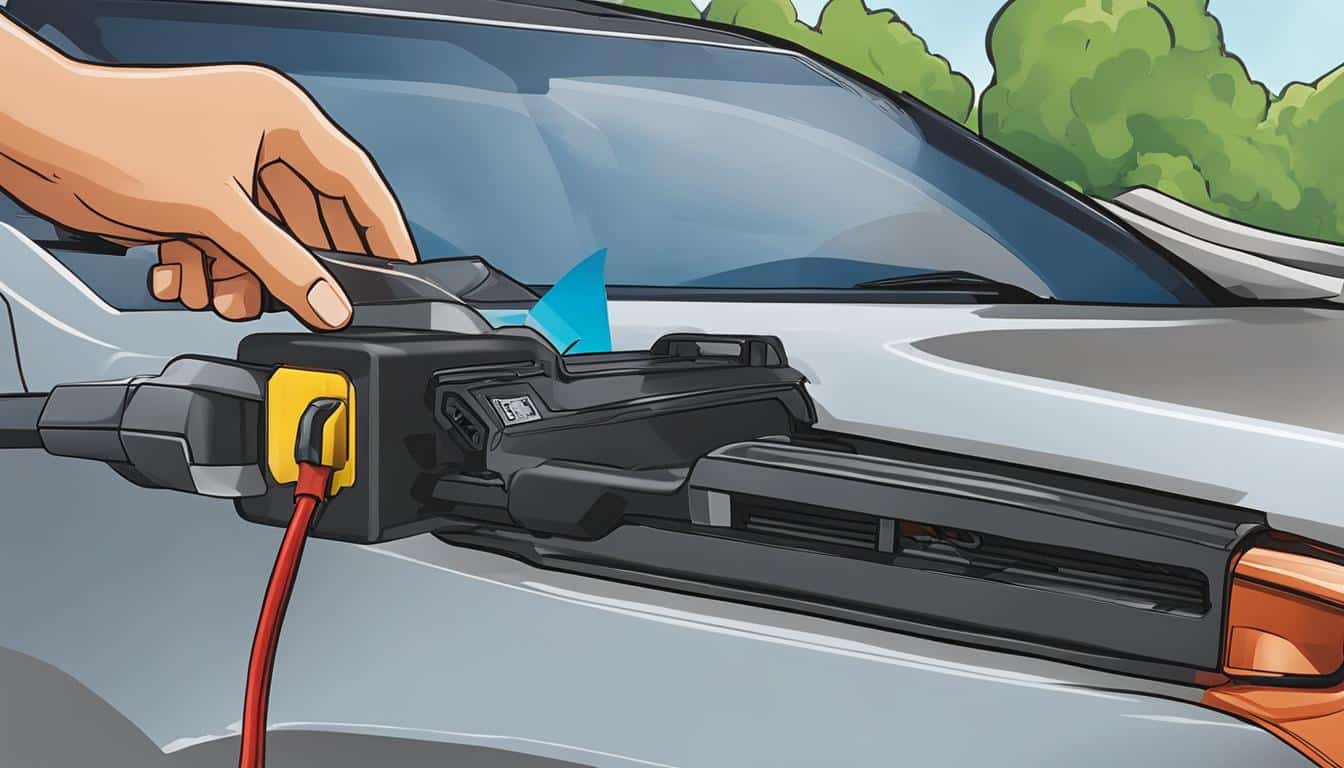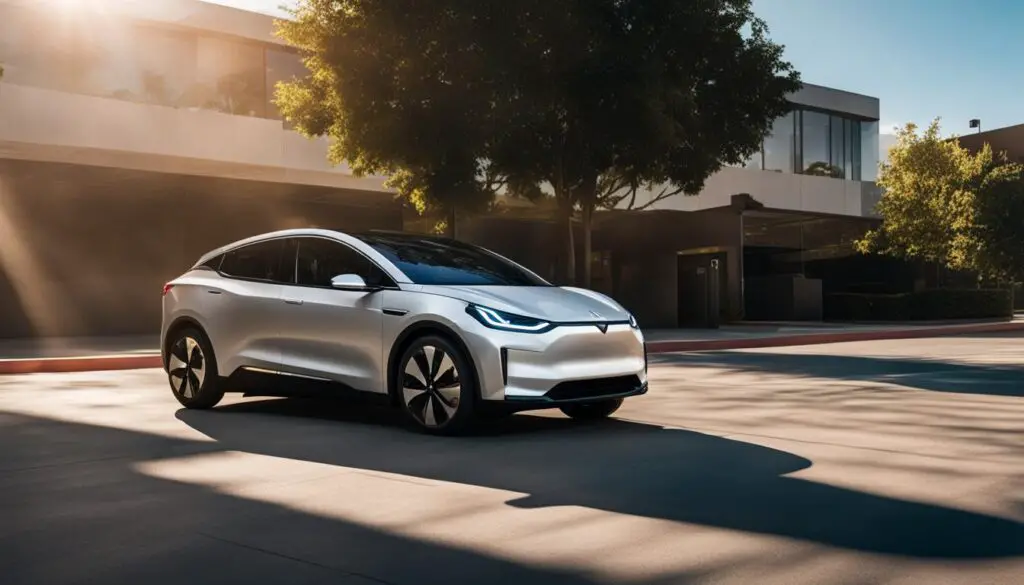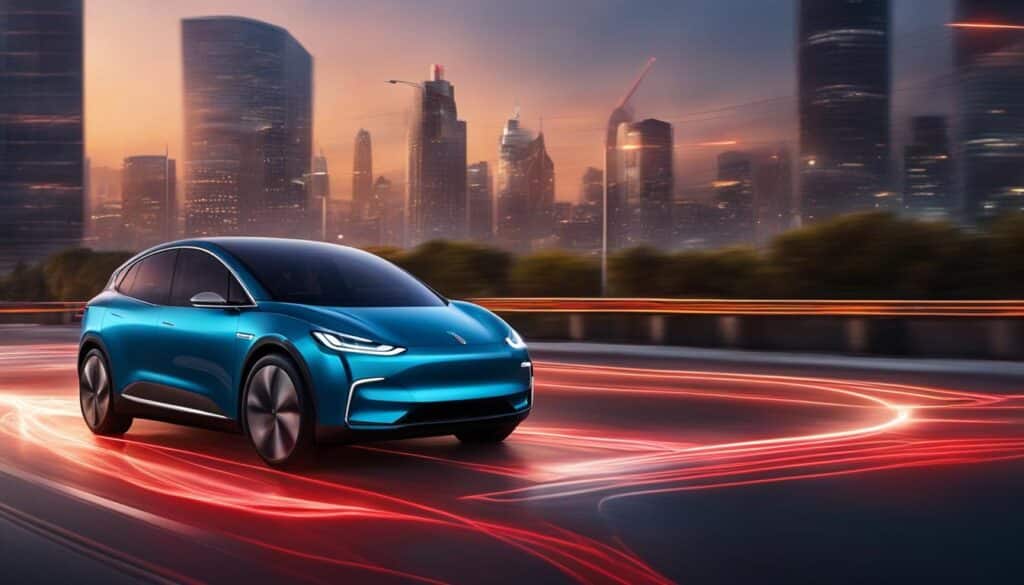
How to Prolong the Life of Your EV Battery: Expert Advice
As an electric vehicle (EV) owner, I understand the importance of maximizing the efficiency and lifespan of my EV battery. Proper maintenance and care are crucial to ensure that your battery performs at its best for as long as possible. In this article, I will share expert tips on how to maintain and prolong the life of your EV battery.
Key Takeaways:
- Avoid charging your EV battery to 100% to prevent overworking the battery.
- Regularly check tire pressure to maintain energy efficiency.
- Minimize heat exposure by parking in shaded areas or garages.
- Utilize regenerative braking to conserve energy and extend battery life.
- Keep your battery clean to maintain optimal performance.
Avoid Charging to 100%
When it comes to maximizing the lifespan of your EV battery, avoiding charging it to 100% is key. While it may be tempting to fully charge your battery for maximum range, doing so can actually reduce its overall lifespan. Instead, experts recommend charging your EV battery to around 80-90% capacity to avoid overworking the battery.
By keeping the charge level slightly below full capacity, you can help prevent unnecessary strain on the battery cells, ensuring they remain healthy and functional for longer. This practice also helps minimize the potential for heat buildup, which can further impact the longevity of your battery.
Remember: it’s always better to charge your EV battery frequently to maintain a healthy charge level, rather than letting it drain completely before recharging. This not only helps preserve the long-term health of the battery but also ensures you have a reliable and ready-to-go vehicle whenever you need it.
“Charging your EV battery to 100% on a regular basis can significantly reduce its overall lifespan. By following best practices and avoiding full charges, you can help extend the life of your EV battery and enjoy optimal performance over the long term.”
Benefits of Avoiding 100% Charging
- Increased battery lifespan
- Improved battery health and performance
- Reduced risk of heat damage
- Enhanced overall energy efficiency
By adopting a charging strategy that avoids reaching full capacity, you can significantly improve the longevity and performance of your EV battery. The aim is to strike a balance between having sufficient range for your daily needs while not pushing the battery to its limits.
| Charge Level | Battery Lifespan |
|---|---|
| 80-90% | Optimal |
| 100% | Reduced |
Check Your Tire Pressure
Properly inflated tires are vital for maintaining the energy efficiency of your electric vehicle (EV). Regularly checking the tire pressure is essential to ensure it remains at the recommended level. Improperly inflated tires can lead to a decrease in performance and battery life, compromising the overall efficiency of your EV.
By keeping a close eye on your tire pressure and making necessary adjustments, you can optimize the energy efficiency of your electric vehicle, maximizing its range and preserving the longevity of the battery.
Why is Tire Pressure Important for Energy Efficiency?
Tire pressure plays a crucial role in the performance and overall efficiency of your electric vehicle. When tires are underinflated, more surface area comes into contact with the road, resulting in increased rolling resistance. This increased resistance requires more energy from the battery, leading to reduced energy efficiency.
On the other hand, overinflated tires offer less traction and a smaller contact patch, compromising safety and handling. They can also lead to faster tire wear and an uncomfortable ride. Maintaining the correct tire pressure not only improves energy efficiency but also ensures optimal performance and safety on the road.
Regular Tire Pressure Checks
To maintain energy efficiency and extend the life of your electric vehicle’s battery, it is recommended to check the tire pressure at least once a month or before any long trips. Follow these steps to ensure accurate and proper tire pressure:
- Park your electric vehicle on a level surface and turn off the engine.
- Consult the vehicle’s manual or the inside of the driver’s side door jamb for the recommended tire pressure.
- Using a reliable tire pressure gauge, check the pressure of all four tires, including the spare if applicable.
- If the tire pressure is below the recommended level, inflate them with an air compressor or at a service station.
- When inflating the tires, make sure not to exceed the recommended pressure.
- After inflation, recheck the pressure to ensure it matches the recommended level.
Regularly monitoring and maintaining your electric vehicle’s tire pressure is a simple yet effective way to ensure optimal energy efficiency. Properly inflated tires will not only help you save on energy costs but also contribute to a smoother and more enjoyable driving experience.
Minimize Heat Exposure
Heat can have a detrimental effect on the cells of your electric vehicle (EV) battery, potentially limiting its lifespan and compromising its performance. To ensure that your EV battery stays in optimal condition, it’s important to minimize heat exposure whenever possible.
One effective way to protect your EV battery from excessive heat is by choosing the right parking spot. Whenever feasible, park your electric car in a shaded area or a garage. This simple action can significantly reduce the amount of heat that your battery is exposed to, helping to preserve its functionality and extend its overall lifespan.

By parking in a shaded area or garage, you shield your EV battery from direct sunlight, which can cause the temperature inside the battery pack to rise. High temperatures can accelerate the deterioration of the battery’s cells and decrease its efficiency over time.
“Minimizing heat exposure is crucial for maintaining the long-term health of your EV battery. By parking in a shaded area or garage, you can safeguard your battery from the detrimental effects of overheating.”
Utilize Regenerative Braking
When it comes to maximizing the efficiency and longevity of your electric vehicle (EV) battery, one crucial feature to take advantage of is regenerative braking. Regenerative braking is a technology found in electric cars that converts kinetic energy generated during braking into battery power. This process not only helps slow down the car, but it also allows for the conservation of energy and extends the lifespan of the battery.
By harnessing the power of regenerative braking, EV owners can reduce their reliance on traditional friction brakes while simultaneously increasing the overall efficiency of their vehicle. When you apply the brakes in an electric car equipped with regenerative braking, the system uses the motor as a generator to convert the kinetic energy into electrical energy. This electrical energy is then stored in the battery for later use, reducing the amount of energy that would otherwise go to waste.
By conserving energy through regenerative braking, you can extend the driving range of your EV and decrease the frequency of recharging. This not only saves time but also contributes to a more sustainable lifestyle. In addition to its energy-saving benefits, regenerative braking also reduces wear and tear on the traditional braking system, resulting in lower maintenance costs over time.
Implementing regenerative braking into your driving habits is simple. As you approach a stop sign or traffic light, try to anticipate the need to slow down or stop gradually. Applying less pressure on the accelerator will trigger the regenerative braking system and convert more kinetic energy into usable electrical energy. This process becomes more effective at lower speeds, allowing you to maximize energy recovery in city driving conditions.
To optimize the use of regenerative braking, familiarize yourself with the specific regenerative braking settings of your electric vehicle. Some EVs offer adjustable regeneration levels that allow you to customize the amount of energy you want to recover during braking. By experimenting with these settings, you can find the balance that works best for your driving style and maximize the benefits of regenerative braking.

In conclusion, leveraging regenerative braking is a key strategy for electric vehicle owners who want to conserve energy and extend the lifespan of their batteries. By taking advantage of this innovative technology, you can contribute to a more sustainable future while reaping the benefits of increased efficiency and reduced maintenance costs.
Keep it Clean
Regularly cleaning your electric vehicle, including the battery, is crucial for maintaining optimal performance and prolonging its lifespan. Dirt and grime can accumulate on the battery, hindering its ability to generate power and impacting overall battery performance. By keeping the battery clean, you can ensure that it continues to operate at its best, allowing you to maximize the benefits of your electric vehicle.
When cleaning your electric vehicle battery, it’s important to follow proper procedures to avoid damaging the sensitive components. Here are some steps you can take to clean your EV battery effectively:
- Start by disconnecting the battery from the power source to ensure safety during the cleaning process.
- Gently remove any loose dirt or debris from the battery surface using a soft brush or cloth.
- Prepare a mixture of mild soap and water, and use a sponge or cloth to wipe down the battery, paying attention to any areas with stubborn stains.
- Rinse the battery with clean water to remove any soap residue.
- Dry the battery thoroughly with a clean, lint-free cloth to prevent moisture buildup.
- Reconnect the battery to the power source once it is completely dry.
Regularly cleaning your electric vehicle battery not only improves its performance but also enhances its overall appearance. It is recommended to include battery cleaning as part of your routine maintenance schedule to ensure its longevity and maintain optimal battery performance.
Expert Tip: Avoid using harsh chemicals or abrasive materials when cleaning your EV battery, as these can damage the battery’s protective coatings.
| Cleaning Steps | Description |
|---|---|
| Disconnect the battery | Ensure safety by disconnecting the battery from the power source. |
| Remove loose dirt and debris | Use a soft brush or cloth to gently remove any loose dirt or debris from the battery surface. |
| Prepare mild soap mixture | Mix mild soap with water and use a sponge or cloth to wipe down the battery. |
| Rinse with clean water | Thoroughly rinse the battery with clean water to remove any soap residue. |
| Dry the battery | Use a clean, lint-free cloth to dry the battery completely. |
| Reconnect the battery | Once the battery is dry, reconnect it to the power source. |
Conclusion
In conclusion, maximizing the life of your electric vehicle (EV) battery is crucial for long-term performance and efficiency. By implementing expert tips for EV battery maintenance, you can ensure optimal battery health and prolong its lifespan.
Avoiding charging your EV battery to 100% and instead charging it to 80-90% helps prevent overworking the battery and extends its longevity. Regularly checking tire pressure is essential for maintaining energy efficiency and preserving the battery’s performance. Additionally, minimizing heat exposure by parking your electric car in shaded areas or garages safeguards the battery cells and ensures optimal functioning.
Utilizing regenerative braking, a feature available in electric vehicles, not only conserves energy but also helps extend the life of the battery. This technology converts kinetic energy into battery power when braking, contributing to greater efficiency and improved battery performance. Lastly, keeping the battery clean by regularly cleaning your electric vehicle, including the battery itself, helps maintain optimal power generation and performance.
By following these expert tips for electric vehicle battery maintenance, you can maximize the lifespan of your EV battery and ensure long-lasting performance throughout your electric car’s lifecycle.
FAQ
How should I charge my EV battery to maximize its lifespan?
It is recommended to charge your EV battery to 80-90% instead of 100% to avoid overworking the battery and reduce its lifespan.
Why is checking tire pressure important for electric vehicles?
Properly inflated tires are crucial for maintaining energy efficiency in your electric vehicle. Regularly checking the tire pressure ensures it is at the recommended level, preventing a decrease in performance and battery life.
How can I minimize heat exposure for my EV battery?
To minimize heat exposure, park your electric car in a shaded area or garage whenever possible. This helps protect the battery cells from heat damage, ensuring optimal performance and longevity.
What is regenerative braking, and how does it benefit my EV battery?
Regenerative braking is a feature in electric cars that converts kinetic energy into battery power when the brakes are applied. It helps extend the battery’s life, conserves energy, and makes your electric vehicle more efficient.
Why is it necessary to keep the battery clean?
Regularly cleaning your electric car, including the battery, is important to remove dirt and grime. Accumulated debris on the battery hinders its ability to generate power and impacts its performance. Keeping the battery clean helps maintain its optimal performance.
